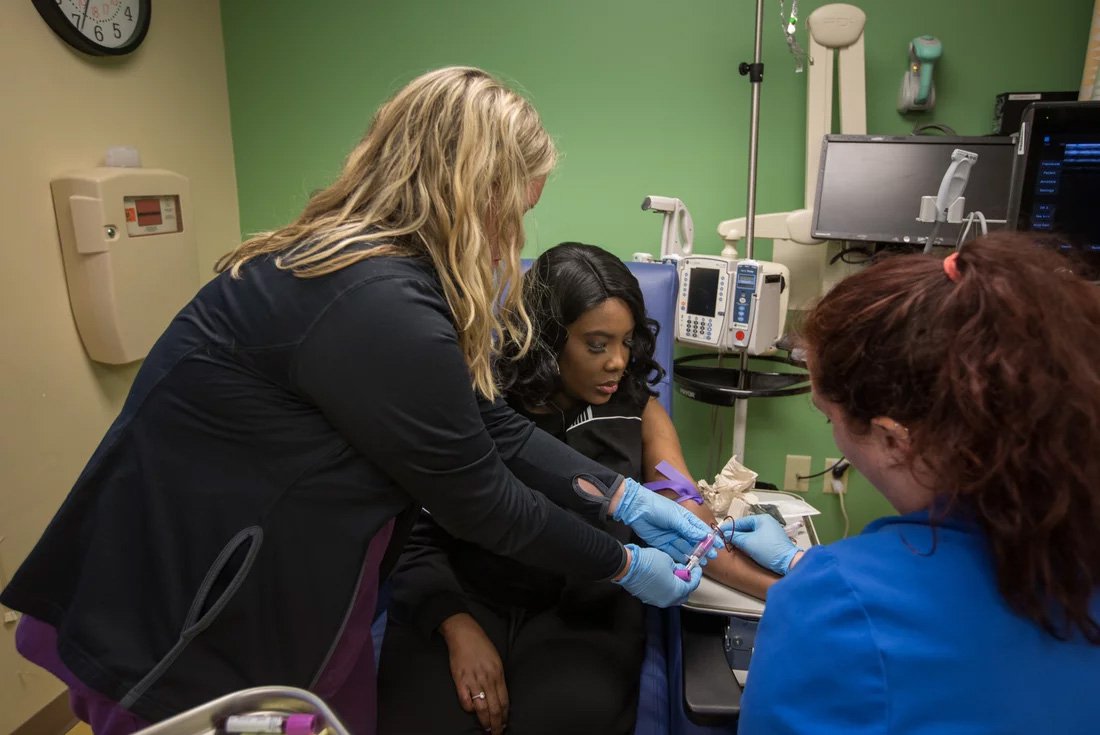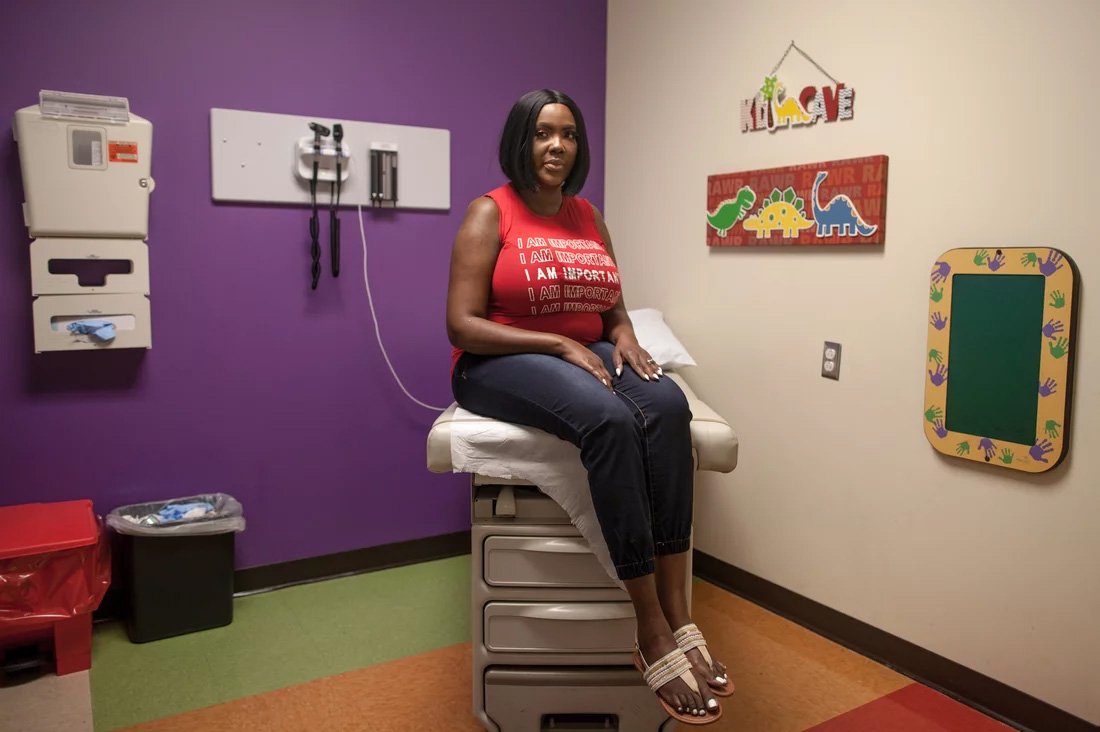







Gene-edited cells fight sickle cell
Victoria Gray volunteered for one of the most anticipated medical experiments in decades: the first attempt to use the gene-editing technique CRISPR to treat a genetic disorder in the U.S.
Victoria was diagnosed with sickle cell disease as a young child. Throughout her life, unpredictable pain would incapacitate her regularly.
She jumped at the chance to participate in the landmark study.
In 2019, NPR correspondent Rob Stein secured an exclusive to cover the experimental treatment, which used CRISPR technology to edit a patient’s own cells to fight the disease. I joined Rob as a photographer and together with Senior Producer Jane Greenhalgh, we flew to Nashville to meet Victoria and her father. They were hopeful Victoria’s edited “super cells” would work. But they also knew the uncharted experiment carried potential risks and it might not work at all.
Incredibly, Victoria continued to improve over the next couple of years. Rob and I were invited to join Victoria’s check-ups at HCA Healthcare's TriStar Centennial Medical Center in Nashville. On my last visit to see her, she wore a bright red shirt with the words “I am important.”
These days, Victoria no longer experiences pain attacks and now lives a normal, active life with her kids and husband in Mississippi. But questions remain: will the results continue working? And if it does, are there longterm effects?
In 2023, the treatment was approved by the FDA and Victoria has become a success story for CRISPR.